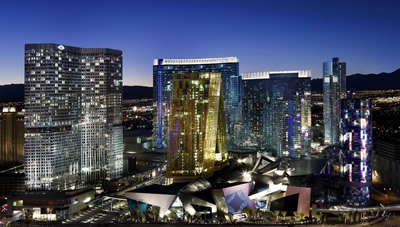

Webmaster: Stansfeld, LLC. |
|
|

APRIL 2015 MEETING
Wednesday, April 8, 2015 (1.0 PDH)
TECHNICAL PROGRAM
The History of Waterproofing Admixtures
Speaker: Brian MacNeil, Regional Manager North America, Kryton International. Tel No. 604.324.8280 ext. 236.
Brian MacNeil has been in the construction industry for over 30 years and has been with Kryton for 15 years. He is currently the Regional Manager for North America. He has worked on projects in over 37 states and nine out of ten provinces in Canada.
Kryton International, Inc. is a worldwide company that is based in Vancouver, BC, with offices around the world. The company provides not only the material for waterproof concrete, but also technical support, training and certification, and approvals for client companies.
 PRESENTATION SUMMARY
PRESENTATION SUMMARY
To an audience of audience of 37 members & seven guests, the presentation discussed Kryton's technology and how it works. In addition, test reports, definitions, corrosion resistance, self-sealing, and other fluid and hardened properties of Kryton treated concrete were addressed. Included was a discussion of the step-by-step process for building a foundation with waterproof concrete, showing construction joints, tie holes, shotcrete, and other details of building a structure. Several example projects from around the United States and Canada were also discussed, ranging from tunnels to deep foundations and from elevator pits and retaining walls to swimming pools and large aquatic facilities, as well as suspended applications such as bridge decks and parking slabs were also discussed.
This presentation utilized a Power Point presentation, with the following examples addressed.
- The use of waterproof concrete for the marina bay sands marina in Singapore.
- The use of waterproof concrete for the foundation of CENTERCITY in Las Vegas.
- The use of water proof concrete at the Boeing Product Development Building in Seattle, WA.
Water damages more structures that anything other cause. This can be from weathering or physical damage to concrete or from concrete that is immersed in water, especially salt water when used as bulkheads or other concrete structures. Recognizing the damage that can be done by water intrusion into concrete, Kryton developed a very reliable method for waterproofing concrete from within, as opposed to other methods that apply waterproofing material to the exterior of the concrete.
As noted, waterproofing methods available include “external” and “internal” means. External water proofing involves applying a water proof material to the exterior of a damaged structural member, whereas internal waterproofing involves placing an admixture in the concrete such that it is fully “blended” into the concrete. In this case, the admixture, called Kryton Krystols, “KIM”, fills the pores and capillaries in the concrete, creating the waterproofing.
Shortcomings and failure of exterior waterproofing include water penetrating into the concrete, causing corrosion of the steel reinforcement and, potentially, spalling of the concrete to fully expose the rebar. The concrete member then requires repair following generally accepted procedures for concrete repair. Exterior waterproofing is then applied to the exterior of the member. Application to such a repair is difficult and failure of the coating often occurs when water penetrates into the coating.
Such failure of the waterproofing membrane can cause collapse and other damage. Unfortunately, coating the exterior of a concrete member is the only way to “waterproof” an existing member, unless a new concrete coating is applied over the old.
Waterproofing admixtures typically fall into two categories, permeability reducing admixture for hydrostatic conditions (“PRAH”) and permeability reducing admixture for non-hydrostatic conditions (“PRAN”), or under pressure conditions. That said, Kryton’s KIM was described as “the only true PRAH”.
Internal waterproofing turns the concrete itself into a moisture barrier. When water intrudes into concrete it does so by infiltrating pores and fissures in the concrete, essentially using the permeability of the concrete to migrate into and through the concrete. Adding 2% Kryton “Krystols” (“KIM”) to the concrete mix, however, results in the product reacting to the water in the concrete, filling the pores and capillaries of the concrete and sealing them so that water cannot intrude into the concrete. In addition, cracks up to .5 mm, and sometimes larger, in width will self-seal as water that does penetrate into the concrete matrix encounters the “Krystols”, forming additional sealing capability.
To confirm the degree of sealing effectiveness provided by KIM, testing is performed, both in the field and laboratory. In this regard, testing includes not only water intrusion over time, but also shrinkage drying and restrained shrinkage.
Following the above discussion of the differences between internal and exterior waterproofing and the way the Kryton System seals the concrete, a discussion of the materials use in new construction was presented. In this regard, various applications for this product were presented, including floating docks, bridge decks, foundations, tunnels, water containment facilities, and the like. In this regard, it is well known that control joints minimize random cracking, while concrete members are used with variable materials, with joints and cracks that must withstand water penetration. The use of Kryton’s KIM must, therefore, control water penetration at such construction anomalies. KIM can be used, both for internal and external sealing such anomalies, as well as for “damp-proofing holes and sealing pipe penetrations.
Recognizing the above, design flexibility, building wall applications, and applications for exposed concrete using KIM for new construction were discussed. Using a “mat slab” example, procedures for building a mat without KIM included:
- Dig the hole,
- Install the moisture retarder membrane,
- Form the member,
- Install rebar,
- pour concrete,
- finish the member
The same procedures for building a concrete mat using Kryton’s KIM is simplified by making the moisture retarder membrane optional.
In addition to the above, KIM’s use for Green Construction such as water features was discussed. This would typically involve bulkheads to form water features.
|



